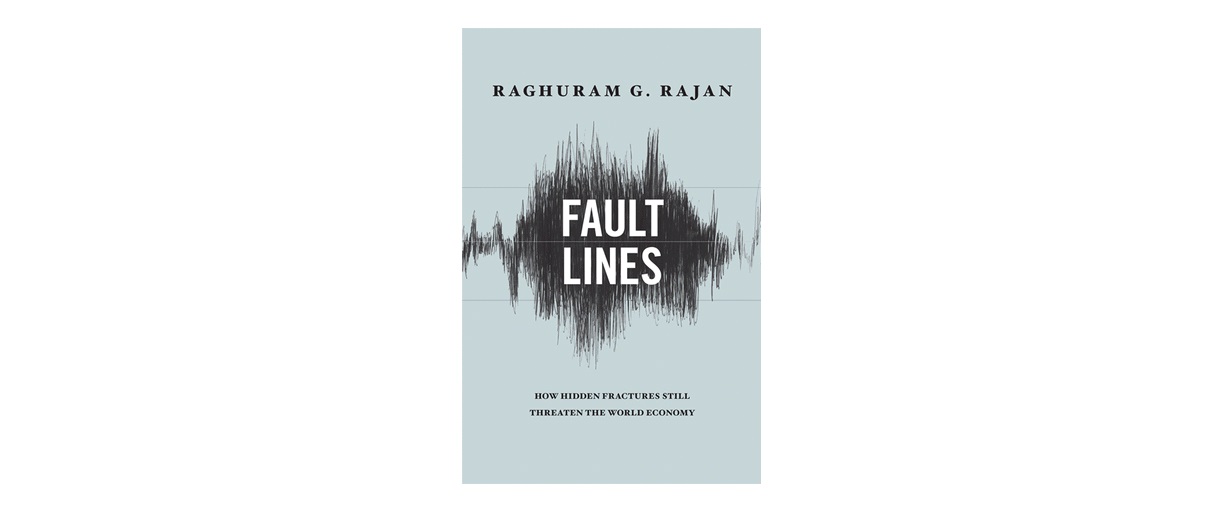Raghuram Rajan starts this book with an incident where he was asked to present a paper in front of the US Federal Reserve Board. He presented a paper on “Has financial development made the world riskier?” and goes on to mention that, no one in the room liked the findings as they didn’t boast the working of the then Federal Reserve Chairman Alan Greenspan; rather it criticized the complexity of the financial system created by the policies. Time however tells us that Rajan was one of the few who foresaw the financial crisis of 2008.
Coming to the book, he has written this book not from the point of view of an economist, but from the point of view of a layman. He has not used any models or any technical jargon that could make reading difficult; rather he has analysed every situation in a simple and logical manner and reached to a conclusion. In a nutshell, he has just tried to connect the dots and provided sufficient content to readers as to how one can use this knowledge and at least identify the fault lines in the system, that can endanger the entire financial system. The simple flow of the book makes it a compelling read for anyone who intends to build a career in finance, and understand the macroeconomic linkages in the world economy.
He starts the first section by dissecting what he thinks is the first fault line, which is rising inequality and dream of politicians to provide affordable housing for all. He argues that rising inequality in income is because of technological advancement and the labour force not acquiring enough skills to be in the race. He further points out that the education system is to be blamed for this. We need a robust education system which adopts the nuances of any advancement that happens so that skills can be acquired and this gap reduces. However, skill enhancement can’t happen overnight, and hence people are rendered with smaller incomes. Politicians feel their pain and hence they started to reduce interest rates so that debt and housing become affordable. And this excessive credit with stagnant pay checks creates a tension in the system which is inherently a sign of fault line. His stance where he has urged students not to pursue any random qualifications but to focus on skills is a testament of what he has written in the book.
He adds another fault line, which is Dependence on Exports. Countries rely on export for faster growth as it generates income for country as well as creates employment. But what export oriented countries don’t understand is, if you rely more on exports and less on domestic consumption then you are likely to be at risk from global factors. At present, the examples of Brazil, China shows that, where cooling commodity prices and slowing global growth are creating trouble. He also makes a point that when you are growing, as an administrator you have to make sure that you have enough competition and you are not dependent on few companies to drive this growth. He explains this with the example of Japan, who grew fast but failed to produce companies across sectors which are efficient at global level. While it does boast of companies such as Sony and Toyota, Japan doesn’t have any global bank like HSBC or Citi. The top 10 banks as listed by Forbes do not have a single Japanese bank. Japan doesn’t have any global retailer like Walmart.
He then raises very critical point of Transparency during growth phase. He argues that the reason why countries like US or UK attracts more foreign money is because the system is very transparent. Public information is widely available and this information is accurate. Compare that to developing countries where information is very opaque and not publicly available. The outcome of this is that the foreign investor will try to minimize risk by providing only short term investments in global currencies. This lack of transparency never allows developing countries to transact in their currency which will deteriorate any chances of the currency becoming a globally accepted currency. Also, the risks of short term money moving out will put constant pressure on local currency, which is precisely what is happening with the Indian Rupee. As a governor, he is trying to put a system in place which has a lot of transparency, that enables creating a confidence necessary to encourage foreign investors to fund long term assignments and investments.
He also criticizes popular politics, like providing jobs for the sake of it and free Medical Assistance. He argues that actual focus should be on creating jobs by growing the industry as well as economy. It may take time but that’s the ideal way to do it. Pushing political agenda may work in the shorter duration but it will create a tension in the financial system. He also criticizes political agenda of keeping interest rate low for considerably longer periods. Firstly, when interest rates are too low, chances of a bubble in asset prices increase. Secondly, with interest rates being too low, investors will move away from short term deposits as it will not fetch decent returns, thereby reducing the funds available for lending in the system.
He finally connects the dots as how the US Subprime Crisis unfolded, with low interest rates, unnecessary risks taken by financial institutions, skewed payment structure of agents and corporations, popular politics, involvement of credit agencies, complex financial products and not enough tools in the system to contain the risk (which he thinks is linked to payments made to officials who ignore the implementation of tools).
All in all, a very good book from one of India’s finest brains, that should be read by anyone who is even remotely interested in the policy making that drives success and failure in the global economic system.











